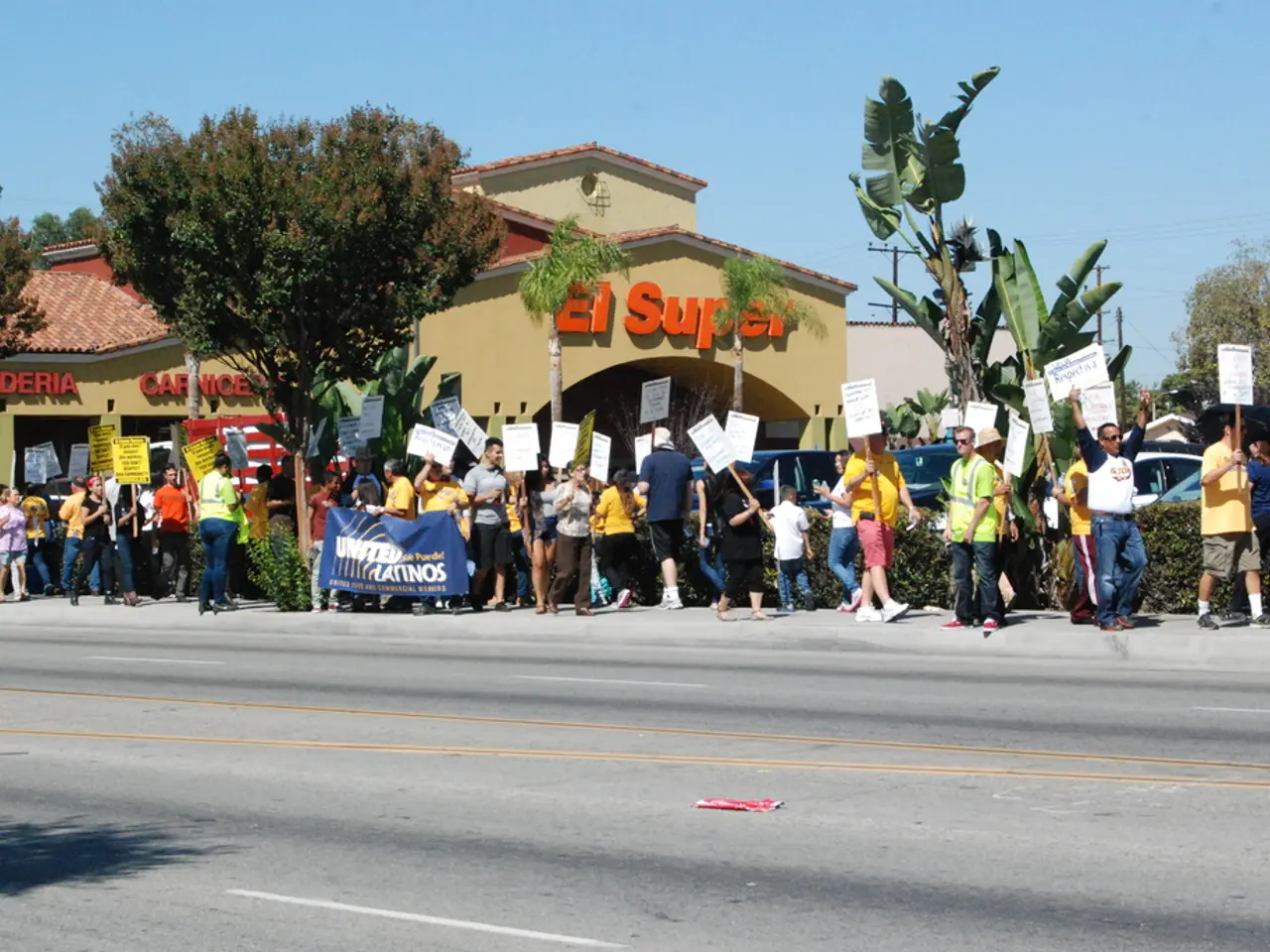Strategies for Integrating Data Visualization in Political Elections
In the dynamic world of political campaigns, data visualization has emerged as a crucial tool for engaging voters, communicating complex ideas, and making informed decisions. By transforming raw data into intuitive and compelling visuals, campaigns can effectively connect with voters and strategically allocate resources.
One of the key benefits of data visualization is its ability to engage voters through personalized and visually impactful content. Custom infographics and dynamic images can incorporate district- or region-specific data, such as local unemployment rates, environmental statistics, and demographic information, making national or broad political issues feel personally relevant to voters in their own communities.
Moreover, data visualization can communicate complex ideas clearly and persuasively. Visual tools such as maps, heat maps, timelines, and charts can break down complicated policy issues, election cycles, or legislative impacts into digestible visuals, reducing cognitive load and helping voters understand nuanced information.
Advanced data visualization tools also reveal patterns and outliers in voting preferences, motivations, and engagement. Campaigns can analyze time-series data, geographic trends, and voter turnout dynamics visually to forecast election outcomes or identify shifts in public opinion, facilitating agile strategy adjustments.
By visualizing demographic, psychographic, and behavioral attributes of voter blocks, campaigns can tailor messages to resonate with distinct groups. For instance, voter segmentation charts can help allocate resources efficiently, enabling personalized outreach grounded in real data rather than assumptions.
Data visualization also plays a significant role in enhancing fundraising efforts. Countdown timers, personalized fundraising goals referencing prior giving behavior, and tax benefit calculators presented visually create urgency and encourage donations by showing individual impact clearly.
In summary, political campaigns leverage data visualization as a multi-functional tool that transforms raw electoral and demographic data into intuitive, compelling visuals. These visuals facilitate voter engagement, clear communication of complex policy issues, strategic targeting of different voter segments, and effective fundraising.
Common data visualized in political campaigns includes voter demographics, turnout rates, donations, event attendance, social media engagement, and polling results. Data visualization can track a campaign's performance, understand public interest, and target voters. It can also create interactive tools for exploring data in new ways, further enhancing its utility in political campaigns.
As we look to the future, the field of data visualization in politics is set to evolve with the integration of tailored local data, predictive analytics, and engaging graphic design. This approach empowers campaigns with actionable insights and persuasive storytelling methods, ensuring that political campaigns remain dynamic, data-driven, and effective.
- In the future, local data integration will transform the field of data visualization in politics.
- Tailored graphics design will empower campaigns with persuasive storytelling methods.
- Predictive analytics can help campaigns forecast election outcomes and identify shifts in public opinion.
- Social media engagement data can be visualized to understand public interest and evaluate the effectiveness of campaigns.
- Event attendance can be tracked and visualized to assess the reach and impact of political events.
- Polling results can be charted to monitor voter sentiments accurately.
- Data visualization can aid in fundraising efforts by showcasing personalized fundraising goals and creating a sense of urgency.
- By visualizing giving behavior, tax benefit calculators can be designed to encourage donations.
- Time-series data can be analyzed to reveal patterns and outliers in voting preferences, motivations, and engagement.
- Data visualization can be utilized to segment voters, enabling personalized outreach strategies.
- Detailed district or regional data can be incorporated into custom infographics to make national issues relevant to voters at a local level.
- Visual tools such as maps, heat maps, timelines, and charts can break down complicated policy issues, election cycles, or legislative impacts.
- Advanced data visualization can reduce cognitive load and help voters understand nuanced information.
- Lifestyle data, including home-and-garden stats, home-improvement trends, and cooking recipes, can be visualized to understand voter preferences.
- Outdoor-living statistics, such as camping trends and gardening practices, can provide insights into voter demographics and interests.
- Fashion-and-beauty data can be visualized to identify trends and predictions, helping campaigns tailor messages to resonate with specific voter segments.
- Food-and-drink preferences, including global cuisines, dining habits, and beverages, can be analyzed to target voters more effectively.
- Sustainable living data can help campaigns advocate for environmental policies that resonate with voters who prioritize eco-friendly lifestyles.
- Technological advancements, such as artificial intelligence and data-and-cloud-computing capabilities, can streamline data analysis and visualization processes.
- Healthy cooking trends and recipes can be analyzed to target voters who prioritize wellness and nutrition.
- Pet ownership data can be visualized to identify patterns and preferences among potential voters.
- Deals-and-discounts data can be used to create targeted marketing campaigns focusing on cost-conscious consumers.
- Travel statistics, including cultural travel, adventure travel, and budget travel, can help campaigns understand voter preferences and interests.
- Car preferences, including electric vehicles, car-maintenance habits, and car-accident rates, can be visualized to identify trends in vehicular preferences.
- Migration patterns can be analyzed to understand demographic shifts and their potential impact on political campaigns.
- Education-and-self-development data can be visualized to identify voter preferences related to career development, job-search trends, and learning resources.
- Personal-growth data, including mindfulness practices and lifelong-learning skills, can help campaigns connect with voters interested in self-improvement.
- Shopping trends and habits, including product-reviews and shopping preferences, can aid campaigns in targeting specific voter segments.
- War-and-conflicts statistics can be visualized to raise awareness and generate support for global peace efforts.
- Productivity and career-development data can help campaigns understand the challenges faced by working voters and tailor messages to resonate with their concerns.




